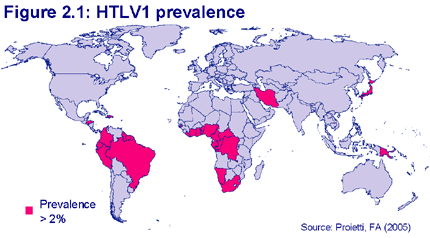HTLV PROJECT

Leukemia is a cancer of the blood or bone marrow
characterized by an abnormal proliferation of blood cells, usually white blood
cells (leukocytes). It is part of the broad group of diseases called hematological
neoplasms. According to the American Cancer Society, in 1992 the eighth leading cause
of cancer death among Native Americans in the United States was leukemia.
Human T-lymphotropic virus (HTLV) is a human, single-stranded RNA retrovirus that causes T-cell leukemia
and T-cell lymphoma.
Lymphoma is the fifth most common
cancer in the United States
and represents over forty subtypes of cancers arising within the lymphatic
system.There are four kinds of human T-cell
leukemia virus: HTLV-I, HTLV-II, HTLV III and IV. We are interested in HTLV-I which
is an abbreviation for the human T-cell leukemia virus type 1, also
called the human T-cell lymphotrophic virus type 1, a virus that has been seriously implicated in several kinds of diseases including HTLV-I-associated myelopathy. HTLV has infected 15 to 20 million people worldwide.
Human T lymphotropic virus type 1 (HTLV1) was the first human retrovirus
to be discovered and is endemic in certain areas (especially SW Japan,
the Caribbean and parts of Africa and South America) where up to 10% or
more of the population may be infected.

In our research, we focus on drug
discovery with using HTLV-1 enzyme. We are doing transformation of DNA which we
received from Dr. Alexander Wlodawer from NIH , protein expression, protein
purification methods like gel filtration, ionic exchange chromatography and ext., enzyme kinetics and characterization.
The students who are interested in ths project may learn
- basic techniques such as transforamation, site directed mutagenesis, etc
- protein expression, refolding and purification
- kinetic analysis.
Students working on this project:
- Ahu Demir - graduate student
- Carol Noda - undergraduate student
